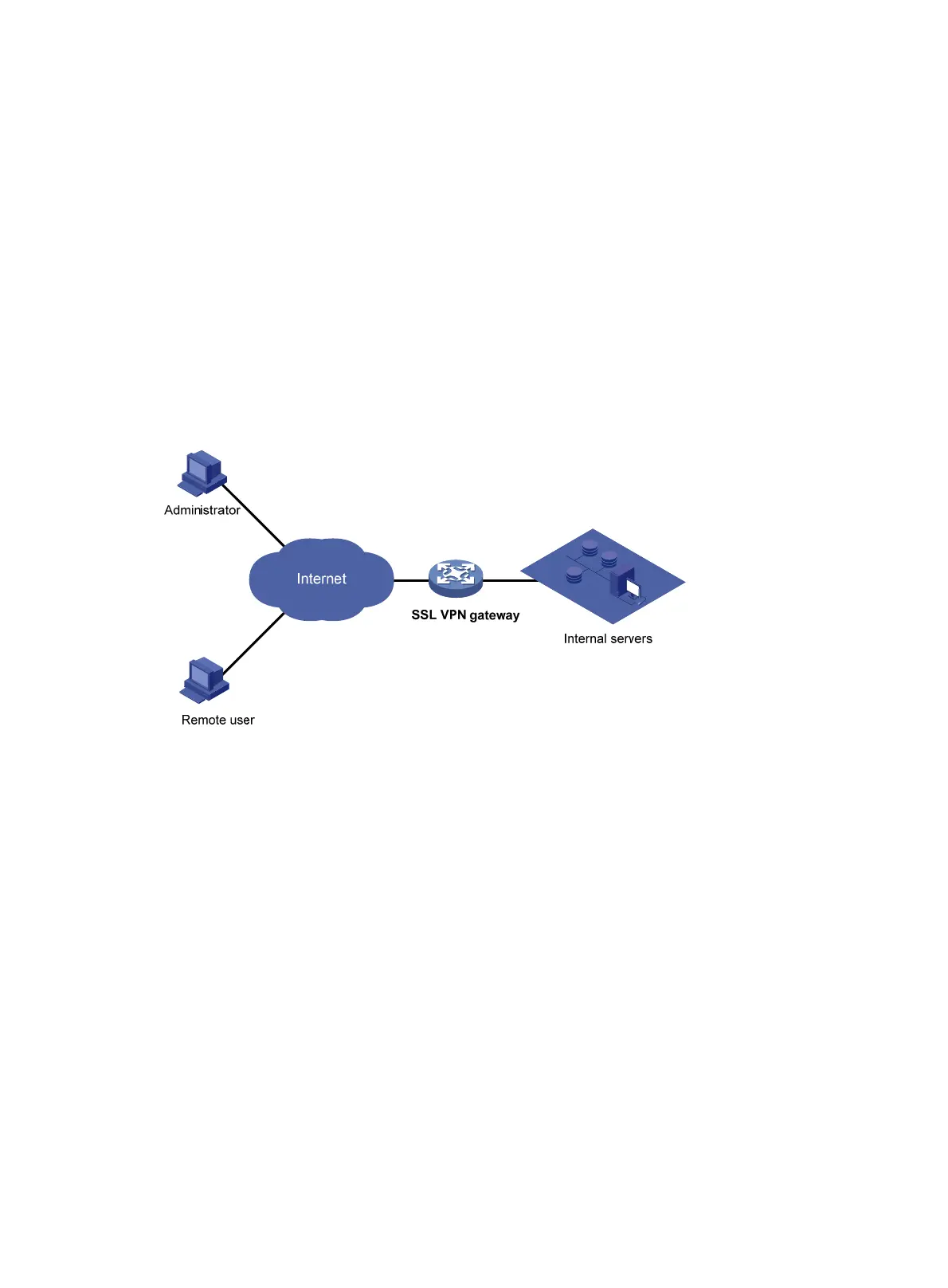32
SSL VPN overview
SSL VPN is a VPN technology based on SSL. It works between the transport layer and the
application layer. Using the certificate-based identity authentication, data encryption, and integrity
verification mechanisms that SSL provides, SSL VPN can establish secure connections for
communications at the application layer.
SSL VPN has been widely used for secure, remote Web-based access. For example, it can allow
remote users to access the corporate network securely. Figure 391
shows a typical SSL VPN network.
On the SSL
VPN gateway, you can create resources to represent the resources on the servers in the
internal network. To access an internal server, a remote user first needs to establish an HTTPS
connection with the SSL VPN gateway and then select the resources to be accessed. The SSL VPN
gateway forwards the resource access request to the internal server. In the SSL VPN deployed
network, the SSL VPN gateway establishes an SSL connection to a remote user. By authenticating
the user before allowing the user to access an internal server, it protects the internal servers.
Figure 391 Network diagram for SSL VPN configuration
How SSL VPN works
SSL VPN works in the following manner:
1. The administrator logs in to the Web interface of the SSL VPN gateway, and then creates
resources to represent resources on the internal servers.
2. A remote user establishes an HTTPS connection to the SSL VPN gateway. The SSL VPN
gateway and the remote user authenticate each other by using the certificate-based
authentication function provided by SSL.
3. After establishing the HTTPS connection, the user can log in to the Web interface of the SSL
VPN gateway by entering the username and password and selecting the authentication method
(RADIUS authentication, for example). The SSL VPN gateway verifies the user information.
4. After logging in to the Web interface, the user finds the resources of interest on the Web
interface and then the user client sends an access request to the SSL VPN gateway through an
SSL connection.
5. The SSL VPN gateway resolves the request, interacts with the corresponding server, and then
forwards the server's reply to the user.

